Abstract
The spread of insecticide-resistance in the two main vectors of malaria in Java, Anopheles aconitus Dönitz and A. sundaicus Rodenwaldt, has been of concern to workers in the Indonesian malaria eradication programme since DDT-resistance was first detected, in A. sundaicus, in 1954. The history of development of resistance in these two vectors has been summarized in this paper by assembling the available records in chronological order, thus facilitating reference.
The picture which emerges is that of somewhat erratic occurrence of DDT-resistance in A. sundaicus and more stable, expanding areas of DDT-resistant A. aconitus. Dieldrin-resistance is more widespread than DDT-resistance in both species and preceded the onset of DDT-resistance in A. aconitus but not in A. sundaicus. These features should not be regarded as species characteristics, however, since selection pressures on the two species have been far from uniform.
Malathion appears to be a promising alternative to DDT and dieldrin for the control of the two vectors in the circumstances described.
Full text
PDF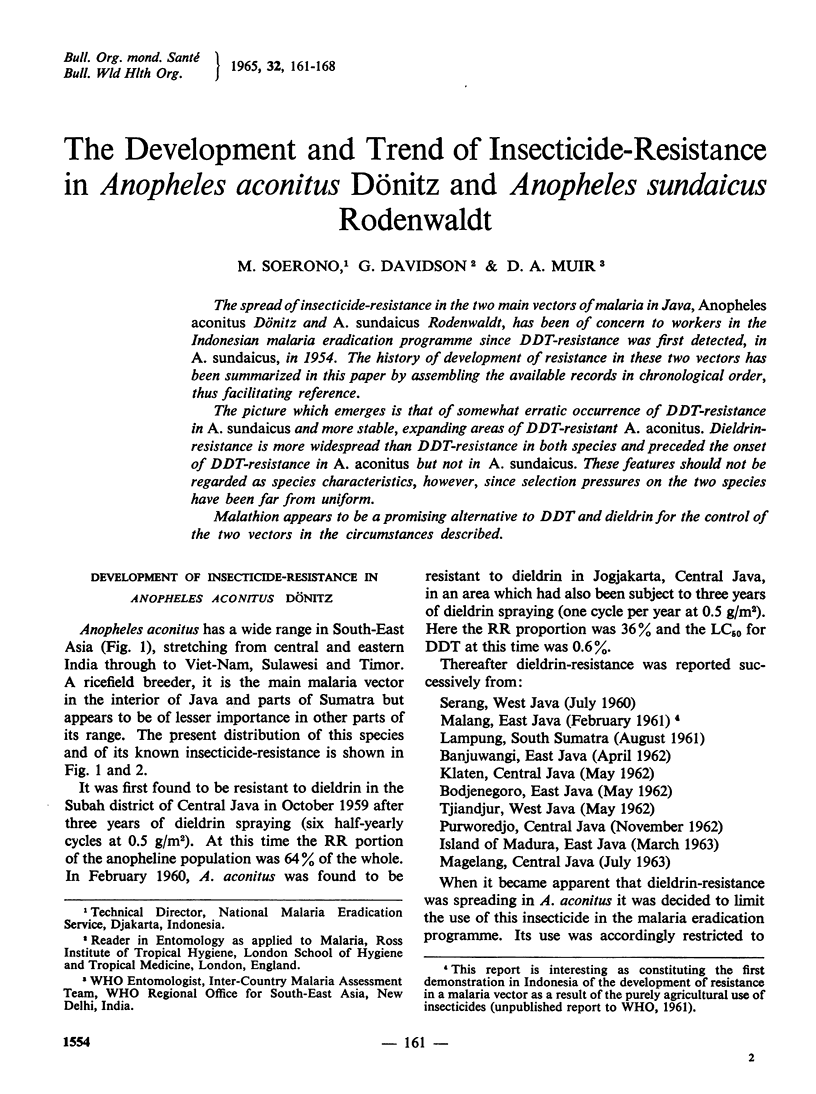
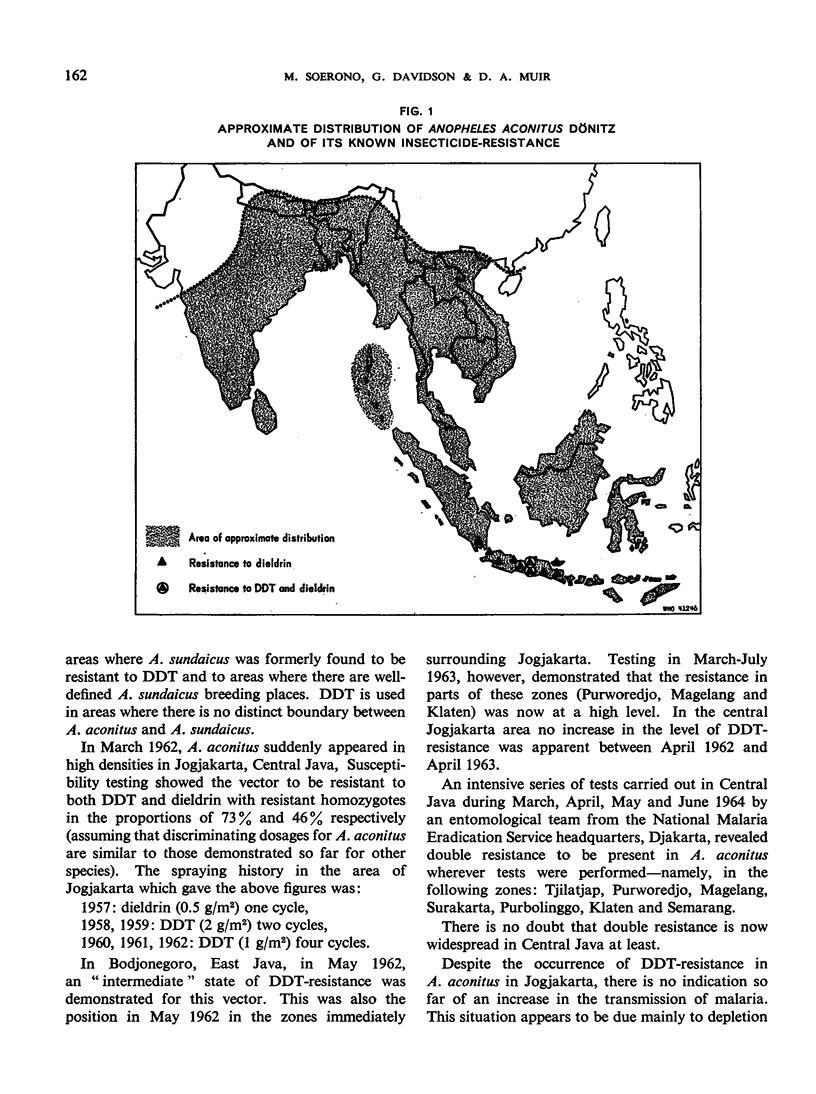
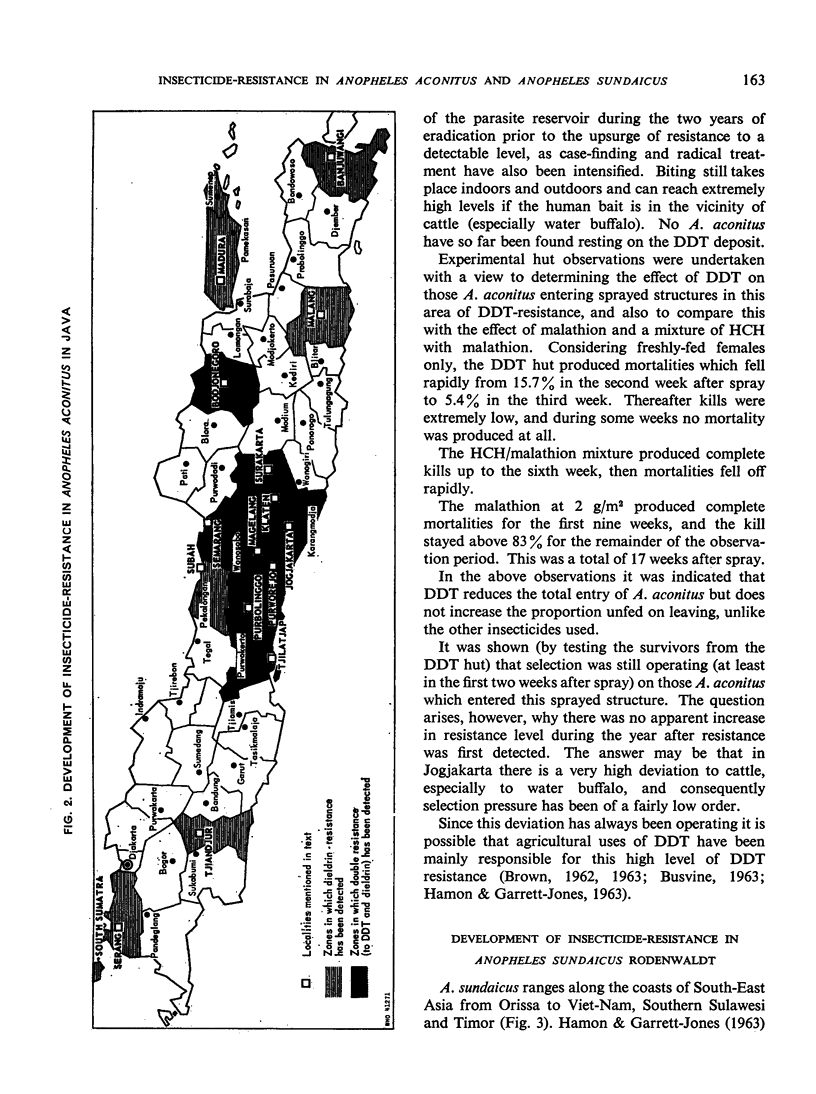
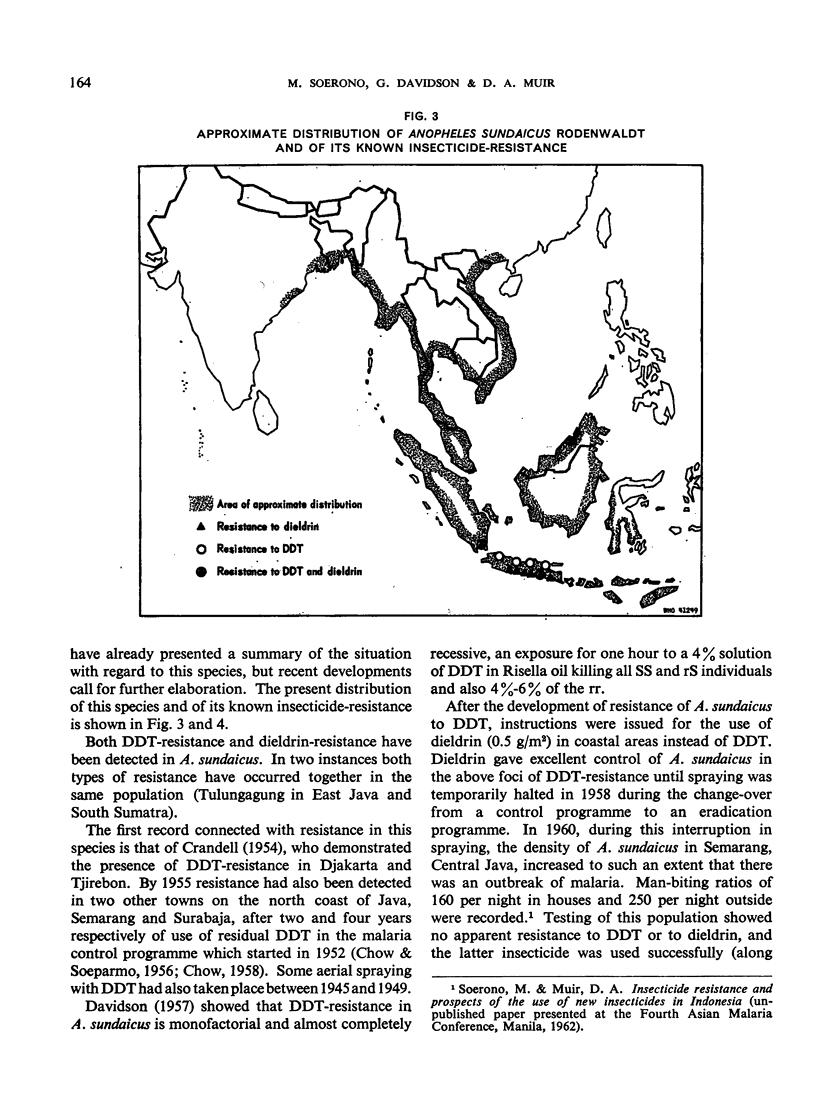
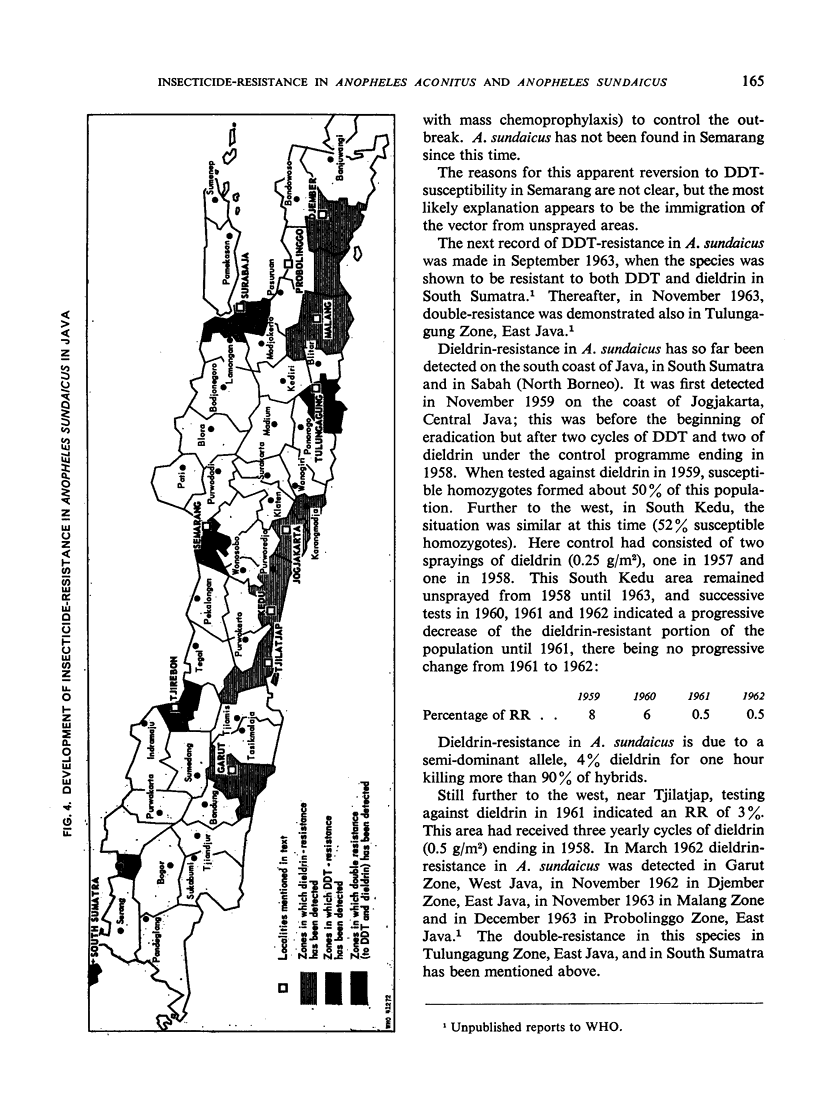
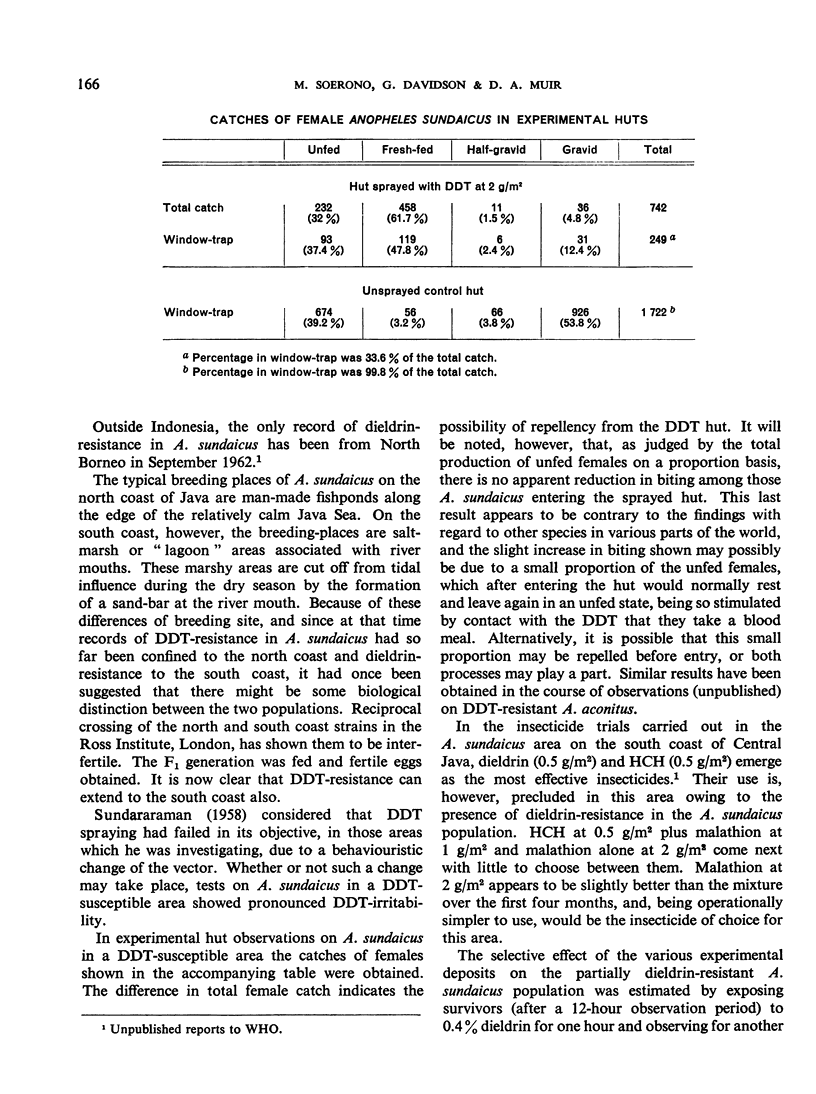
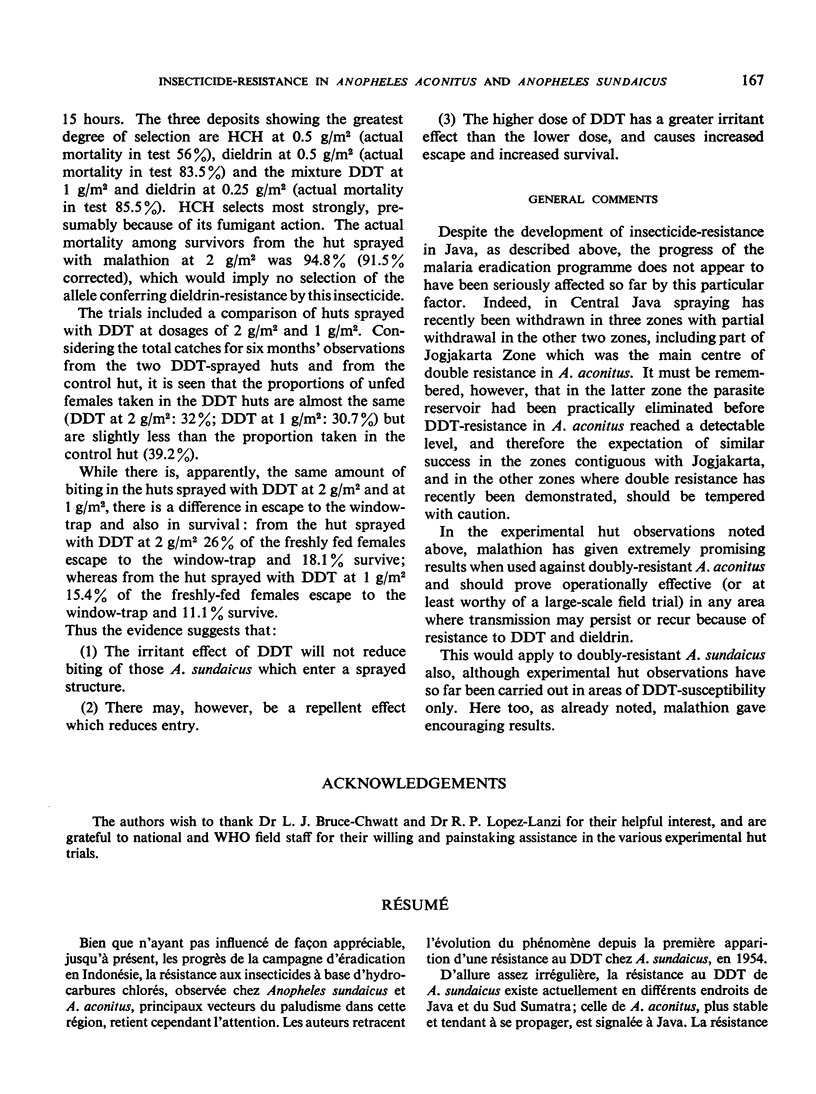
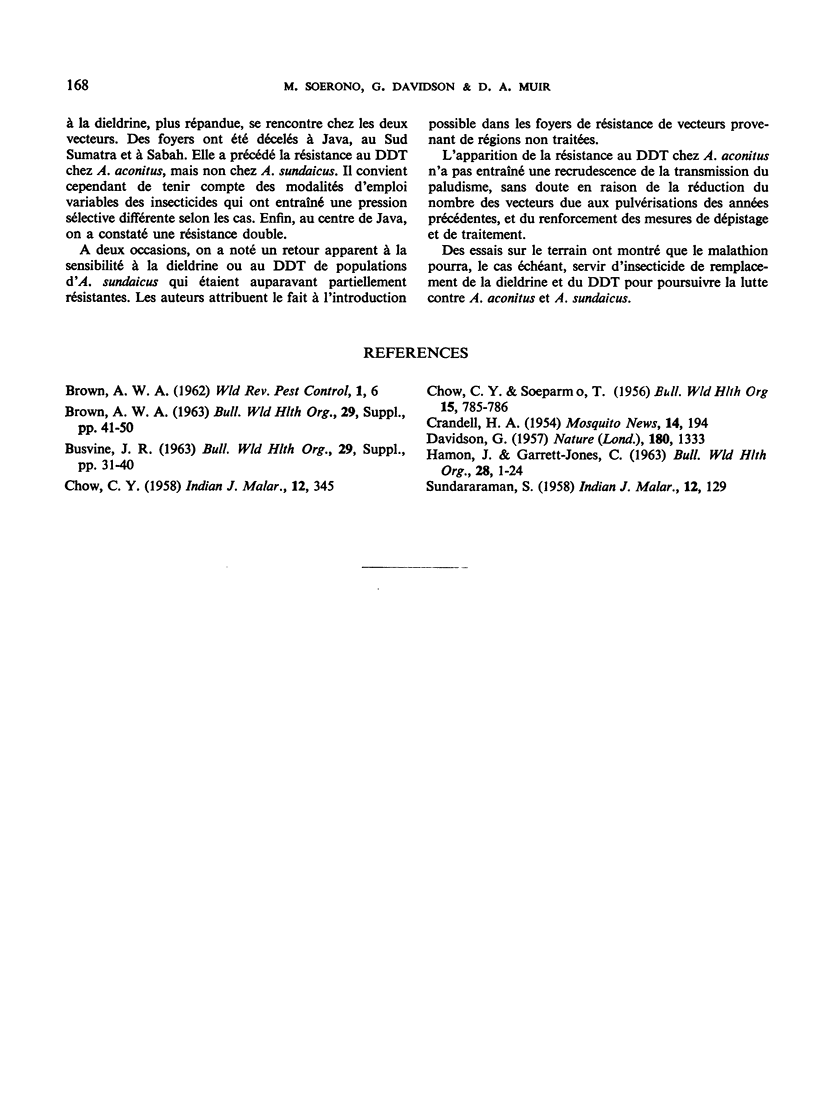
Selected References
These references are in PubMed. This may not be the complete list of references from this article.
- CHOW C. Y. Insecticide susceptibility and resistance in anopheline mosquitoes in Java. Indian J Malariol. 1958 Dec;12:345–366. [PubMed] [Google Scholar]
- CHOW C. Y., SOEPARMO H. T. DDT-resistance of Anopheles sundaicus in Java. Bull World Health Organ. 1956;15(3-5):785–786. [PMC free article] [PubMed] [Google Scholar]
- DAVIDSON G. Insecticide resistance in Anopheles sundaicus. Nature. 1957 Dec 14;180(4598):1333–1335. doi: 10.1038/1801333a0. [DOI] [PubMed] [Google Scholar]
- HAMON J., GARRETT-JONES C. [Resistance to insecticides in the major malaria vectors and its operational importance]. Bull World Health Organ. 1963;28(1):1–24. [PMC free article] [PubMed] [Google Scholar]


